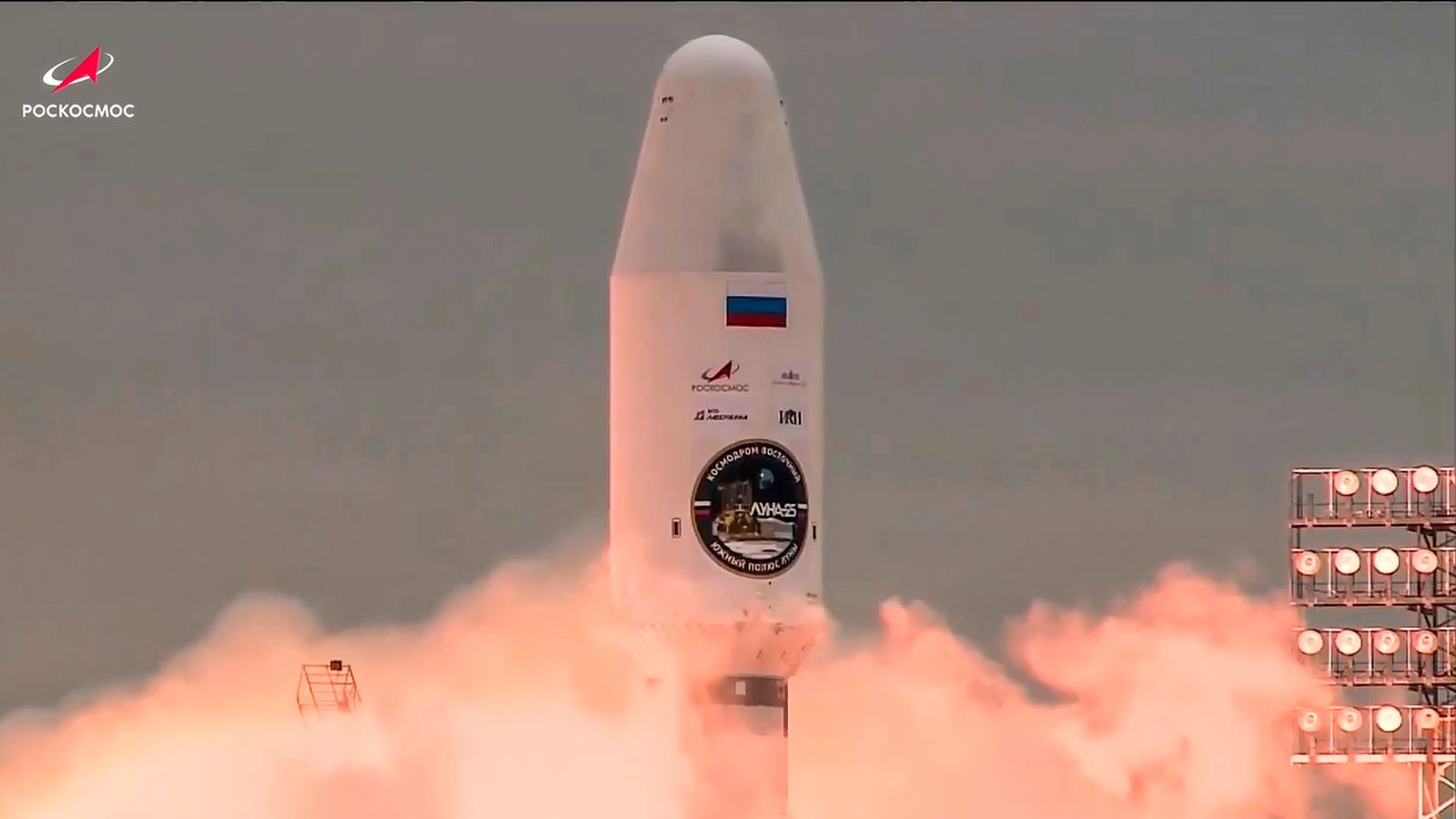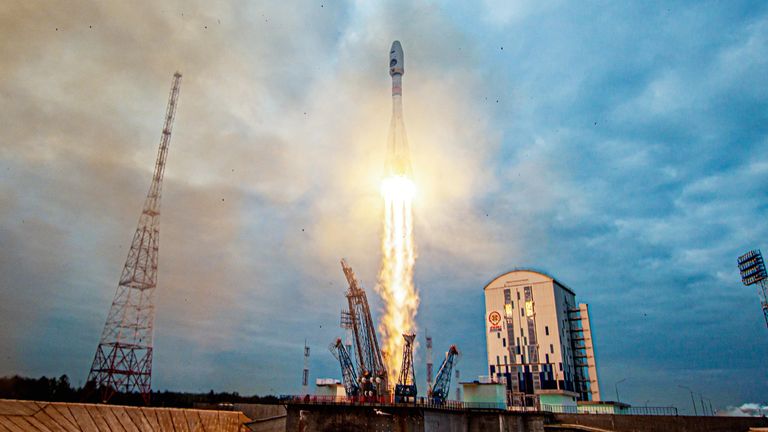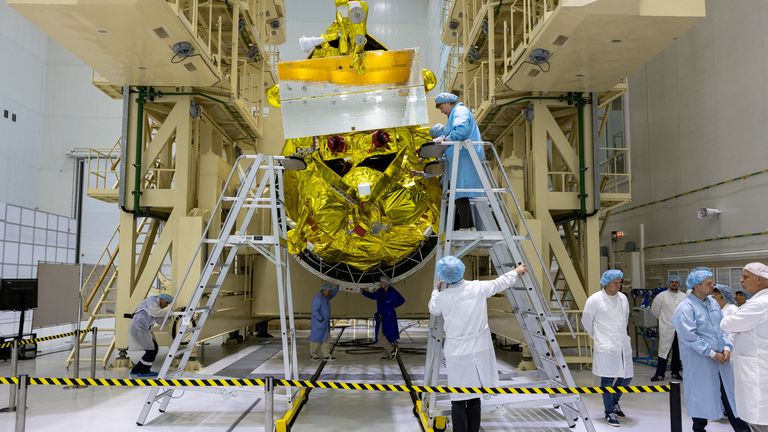The head of Russia’s space agency has blamed the Luna-25 spacecraft crashing into the moon on the country’s decades-long pause in lunar exploration.
The unmanned robot lander had been scheduled to become the first spacecraft to touch down on the south pole of the moon on Monday, in an area where scientists believe important reserves of frozen water and precious elements may exist.
Roscosmos director general Yury Borisov said the spacecraft’s engines were turned on over the weekend to put Luna-25 into a “pre-landing orbit” but did not shut down properly – slamming the lander onto the moon.
“Instead of the planned 84 seconds, it worked for 127 seconds. This was the main reason for the emergency,” Mr Borisov told Russia 24, a state news channel.
Roscosmos had contact with the spacecraft until 2.57pm local time on Saturday, when communication was lost and “the device passed into an open lunar orbit and crashed”, he said.
It was Russia’s first lunar mission since 1976, when it was part of the Soviet Union. Only three countries have managed successful moon landings: the Soviet Union, the US and China.
“The negative experience of interrupting the lunar programme for almost 50 years is the main reason for the failures,” Mr Borisov said – adding “it would be the worst decision ever” for Russia to end the programme now.
Sanctions imposed on Russia after it invaded Ukraine nearly 18 months ago have affected its space programme, making it more difficult to access Western technology.
After the crash the Russian space agency said the moon mission was about ensuring long-term “defence capability” as well as “technological sovereignty”.
Read more:
India announces moon lander days from touching down
This star could become one of the most powerful magnets in the universe
The “race to develop the moon’s natural resources has begun,” Mr Borisov declared.
“In the future, the moon will become an ideal platform for the exploration of deep space.”
He added: “This is not just about the prestige of the country and the achievement of some geopolitical goals.
“This is about ensuring defensive capabilities and achieving technological sovereignty.”
The robot – which was the size of a small car – blasted off on a Soyuz rocket and entered the moon’s orbit on Wednesday.
It sent back photos of the third-deepest crater on the southern hemisphere of the lunar surface, the Zeeman crater.
The lunar south pole is of particular interest to scientists, who believe the permanently shadowed craters contain frozen water that future explorers could transform into air and rocket fuel.



